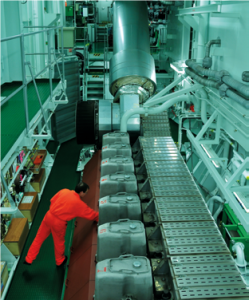The Charity
Aviation
Maritime
More main engine problems whilst arriving and sailing

Initial Report
Outline:
Although this topic was extensively covered in a recent issue of Maritime FEEDBACK, (MFB55), these two reports serve as a timely reminder to always be prepared for the unexpected.
What the reporter told us (1):
The vessel in question recently suffered a main engine problem shortly after departing her berth. It was found that the vessel could only proceed at a maximum of Slow Ahead, thus she proceeded to a local anchorage under pilotage to effect repairs. At the time of the pilot’s disembarkation, the cause of the problem had not been identified.
What the reporter told us (2):
Approximately ten minutes after departing the berth and mid-stream on an outbound passage, the main engine developed a fuel leak which required the vessel to be stopped for approximately ten minutes. The channel does not have much room for manoeuvring, but we managed to hold station with the assistance of two tugs. With the fuel leak repaired the vessel got underway again, only to have to stop four minutes later due to a hydraulic pipe leak on the main engine. This time the delay was about thirty-five minutes. Nevertheless, the tugs again assisted us in holding station. Eventually the Chief Engineer cleared the vessel for transit, albeit at a maximum speed of half ahead. Upon clearing the channel buoys the vessel proceeded to anchor to effect full repairs.

CHIRP comment:
The testing of main engines and a thorough inspection of the machinery by a responsible engineer is essential. During such inspections existing leaks and faults will be detected, although in these two specific reports there is no guarantee that testing of the main engine prior to departure would have prevented the stoppages.
Good communication and integrity of communications between different departments will allow prudent decisions to be made.
Planning for “what if” scenarios such as having to stop mid-channel with no anchorages in the vicinity and submarine pipelines precluding anchoring, form part of passage planning and the practice of good seamanship. Consider when tugs should be standing by and when they can safely be released, bearing in mind the topography of the approaches, nature of the seabed and the prevailing weather conditions.
The introduction of new low sulphur fuels has been much heralded in the maritime press and technical publications. CHIRP would be interested to receive reports dealing with any proven or suspected issues resulting from the use of these new fuels.







